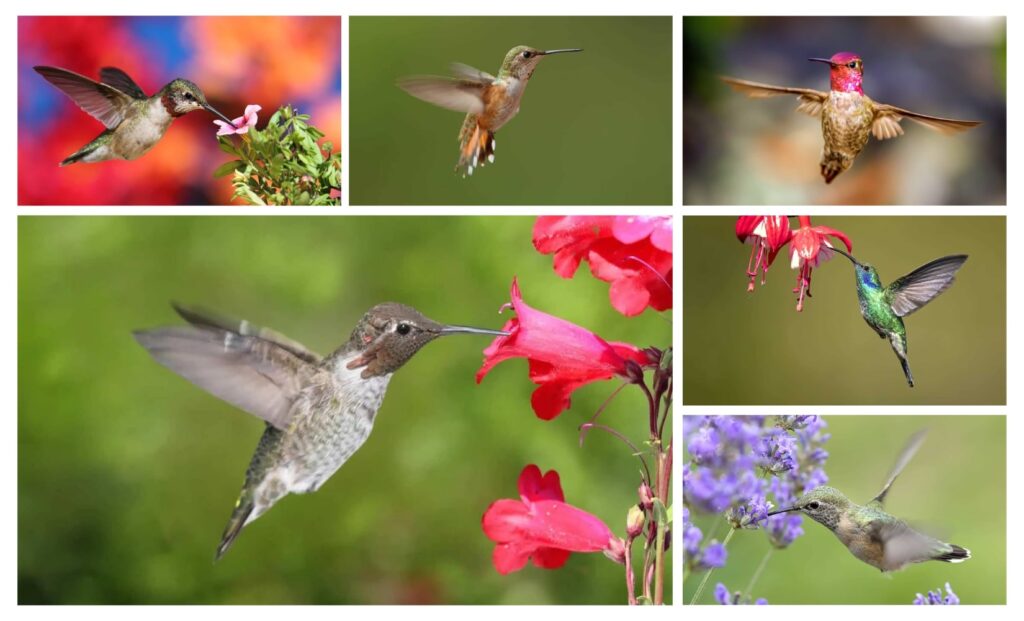Nicknamed the “heart of it all,” the state of Ohio is filled with possibilities of breath-taking retreats and full-on escapes to nature, like the Old Man’s Cave, Whispering Cave, and Brandywine Falls. A part of Ohio’s charm has got to be the magnificent species of hummingbird that occasionally pay a visit.
Of the 443 native bird species in Ohio, there aren’t any bird species that quite compare to hummingbirds. These little fellas are famous for their bright colors, long bills, and lightning-fast wingbeat. However, only one species of hummingbirds regularly occurs in the state, the Ruby-throated hummingbird.
However, rare or accidental hummingbirds occasionally visit this spot in North America, including the Mexican Violetear, Rufous hummingbird, Anna’s hummingbird, Allen’s hummingbird, Black-chinned hummingbird, and Calliope hummingbird.
Let’s take a look at this list of hummingbirds individually so you can identify them on your own.
Ruby-Throated Hummingbird (Archilochus Colubris)
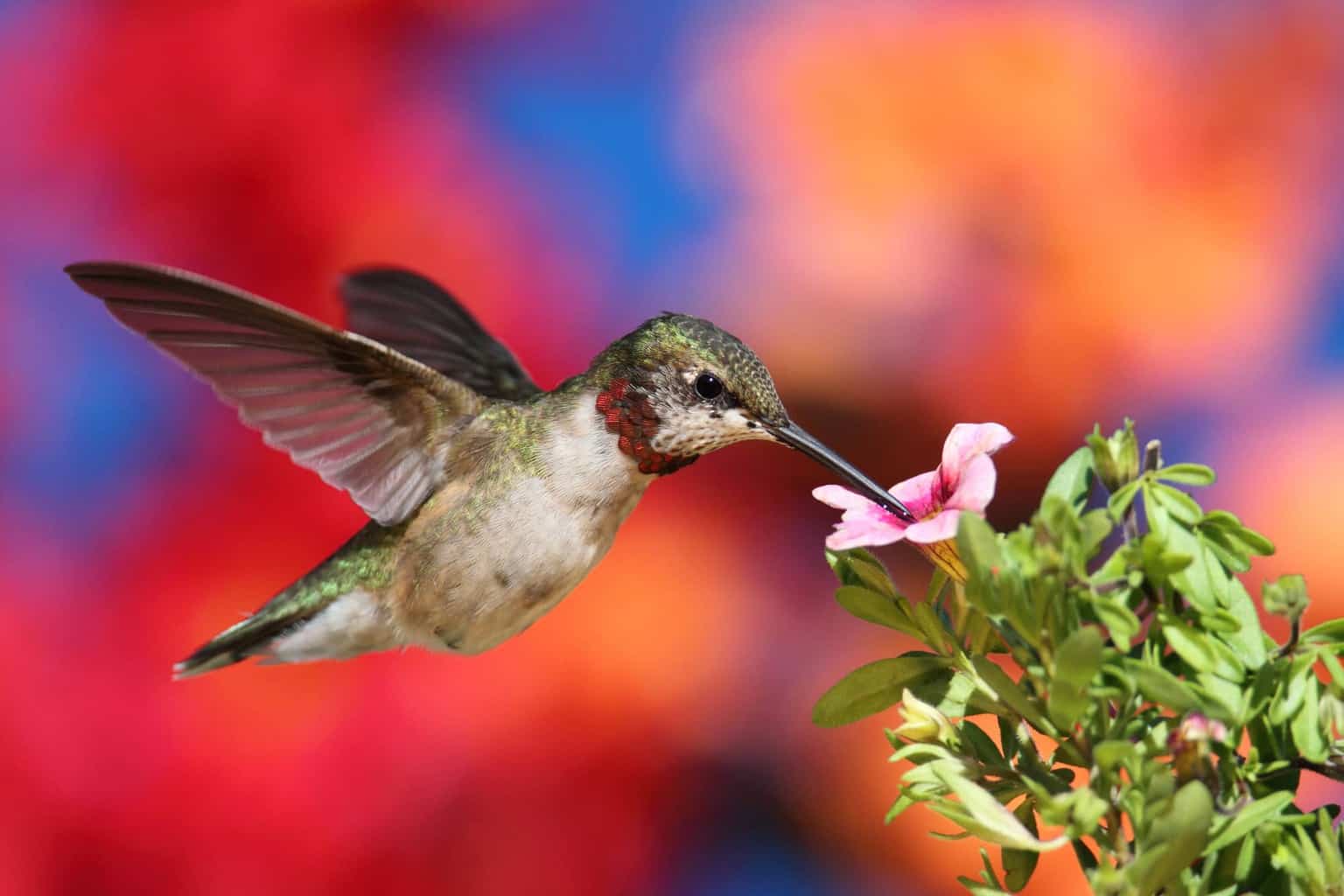
- Length: 2.8 to 3.5 inches
- Weight: 0.12 ounces for males and 0.13 ounces for females
- Wingspan: 3.1 to 4.3 inches
Description:
Ruby-throated hummingbirds have solid black thin bills and chins with emerald green backs and crowns, and the males have vivid, glossy ruby-red throats in the sunshine, whereas the female Ruby-throated hummingbird has plainer plumage with faint dusky streaks.
Additional Information:
Ruby-throated hummingbirds are the only native hummingbird to Ohio, famous in the state during their breeding season, arriving in the spring, usually late April or early May.
Weighing as little as a penny, this common hummingbird species has a migration pattern covering a whopping 500-mile journey, including a non-stop flight from Central America across the Gulf of Mexico.
Male Ruby-throated hummers tend to be aggressive birds, defending their territory and source of food. As a result, you’ll often find Ruby-throated hummingbirds in meadows or backyard gardens where they like to feed on nectar for energy from tubular flowers or backyard nectar feeders. They’ll also eat insects and spiders on occasion, potentially using spiderwebs in their nests.
If you want to attract hummingbirds into your backyard, planting brightly colored flowers, particularly bright orange or red ones, is a great way to get Adult ruby-throated hummingbirds to visit.
Lastly, be sure to set up several widespread hummingbird feeders around your garden to prevent the males from fighting.
Mexican Violetear (Colibri Thelassinus)
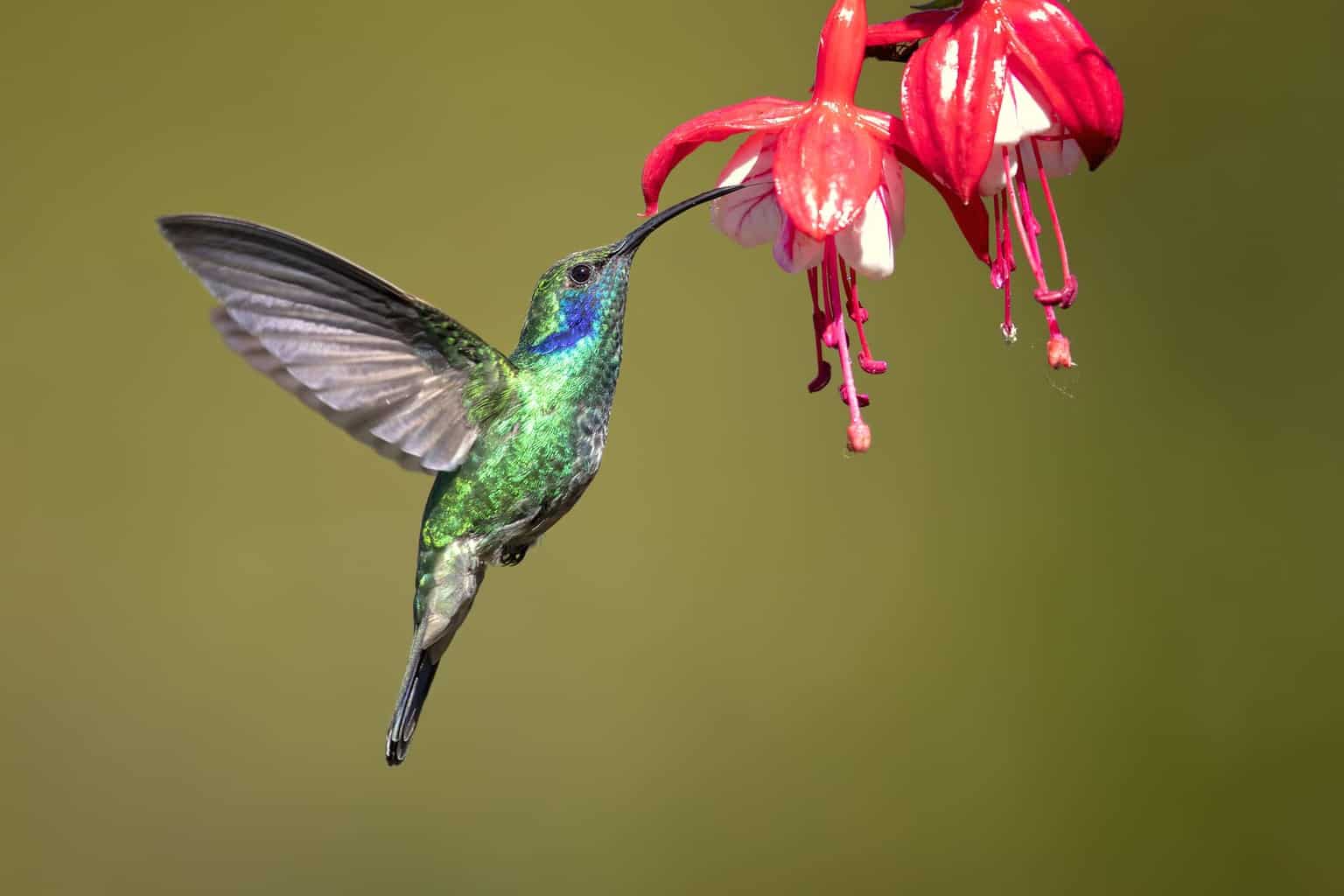
- Length: 3.8 to 4.7 inches
- Weight: 0.17 to 0.19 ounces
- Wingspan: 4.7 inches
Description:
Mexican violetears have emerald to metallic green plumage with a bluish-green tail and violet patches on their cheeks and breasts. Female hummingbirds of this species are a bit smaller and duller than their male counterparts.
Additional Information:
The Mexican violetear is a medium-sized hummingbird native to tropical highlands and forested Mexico to Nicaragua. These little birds are non-breeding, rare visitors in Ohio.
Mexican violetears tend to be pretty vocal and sing a jerky, metallic, chipping song as a courtship display in their territories. The male Mexican violetear also flies in a fascinating u-shape pattern to get females’ attention.
You’ll notice that these beautiful birds typically forage alone while feeding at mid-level canopies. However, they sometimes gather in deforested areas with flowering trees, especially coffee-shade Inga.
For what it’s worth, you can set up a feeder during Spring, around late April, when these little fellas struggle to find enough food sources in the wild. Even though Ruby-throated hummingbirds are most common, you might be lucky enough to have a gorgeous Mexican violetear hummingbird visitor pop by for a visit.
Rufous Hummingbird (Selasphorus Rufus)
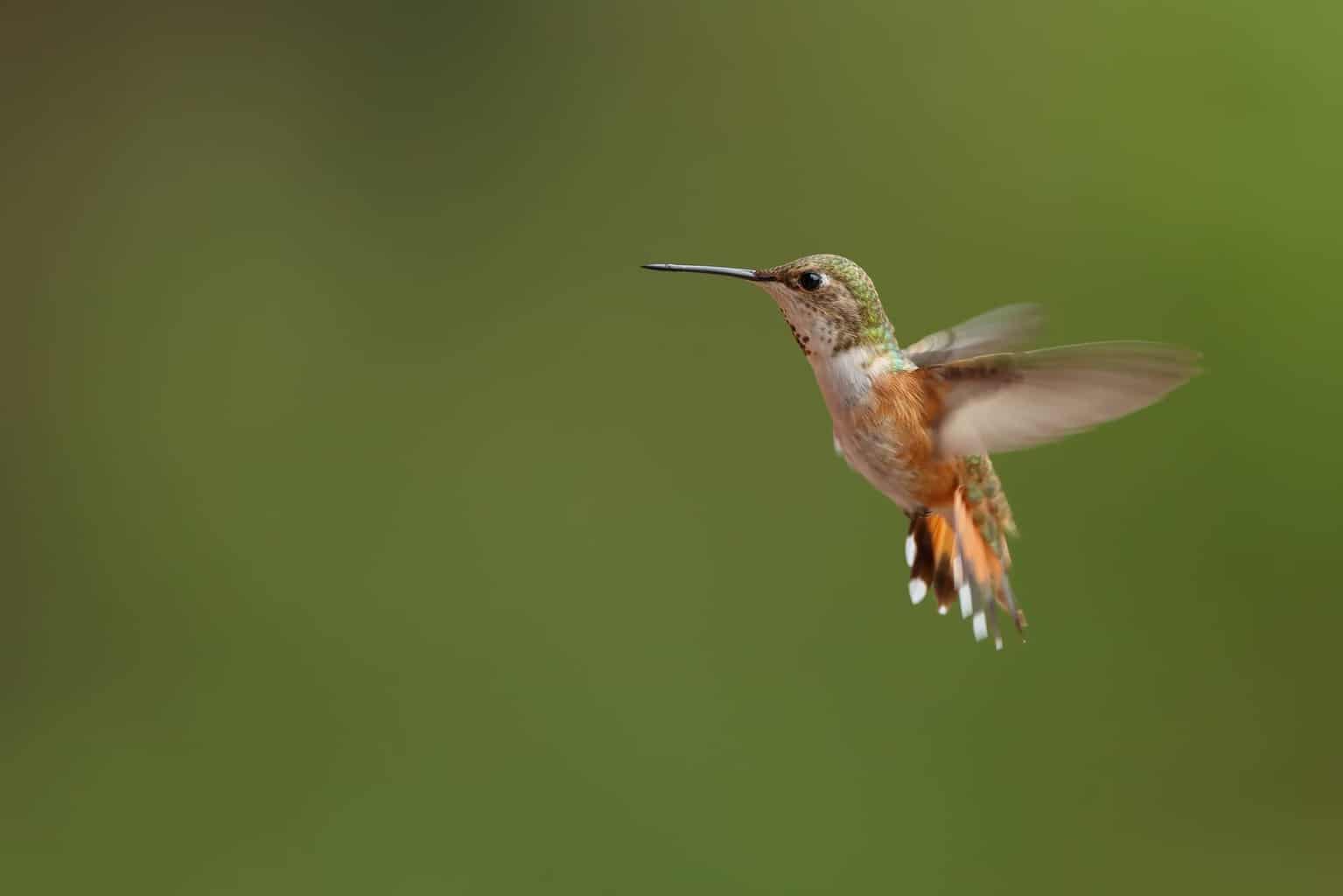
- Length: 3.5 inches
- Weight: 0.07 to 0.17 ounces
- Wingspan: 4.3 inches
Description:
Rufous hummingbirds look pretty similar to Allen’s hummingbirds. They have slender bills with short wings, whitish breasts, and rufous crowns, flanks, and tails (hence the common name).
Males are slightly smaller and feature a beautiful iridescent reddish-orange throat that glows in the sunlight. In addition, some of the males may have a greenish wash on their crown and back. In comparison, females have a less flashy throat patch, instead having white speckled throats with a central orange splotch, green crowns and backs, and dark tails with white tips.
Additional Information:
Rufous hummingbirds are tiny hummers occasionally spotted feeding at hummingbird feeders in Ohio during the fall and winter.
Both males and females are known for their territorial and aggressive nature. In fact, Rufous hummingbirds are one of the feistiest hummingbirds; these relentless attackers produce high-pitched, chipping vocalizations as part of their threat display in feeding territories.
Rufous hummingbirds have the longest migration routes of all migrating hummingbirds in the United States. They can travel over 4,000 miles in the migration season as they move from northwest Alaska to Mexico and the Gulf Coast and back.
On average, these tiny hummingbirds can beat their wings between up to 62 wingbeats per second, allowing them to hover in one place effortlessly.
Anna’s Hummingbird (Calypte Anna)
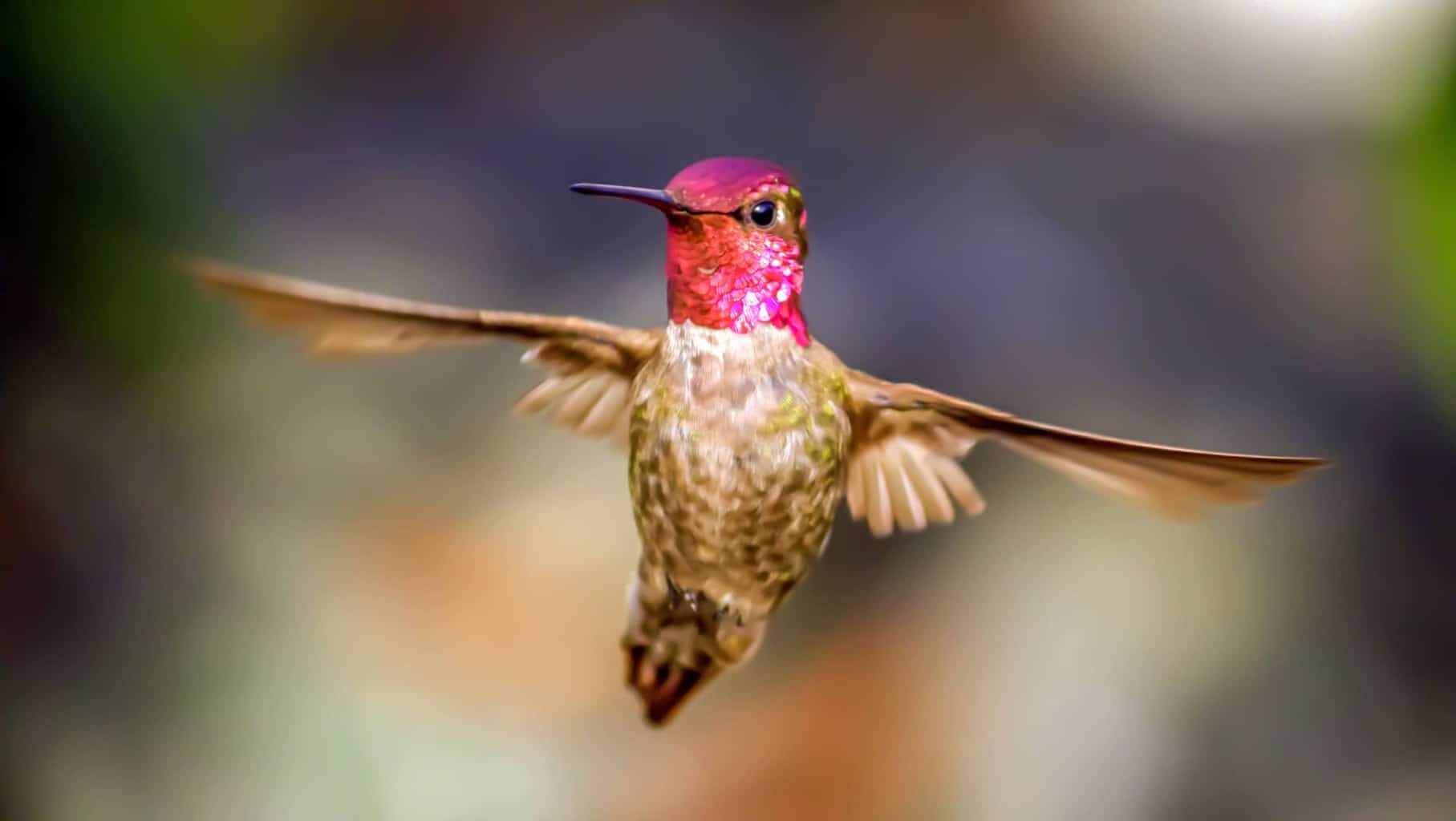
- Length: 3.9 to 4.3 inches
- Weight: 0.98 to 0.2 ounces
- Wingspan: 4.7 inches
Description:
As the most vocal hummingbirds in the United States, Anna’s have straight, slender bills, grey chests and bellies with red throats and crowns, and iridescent bronze-green backs and flanks. The females typically have less bold coloring.
Lastly, they have a pale, broken eye-ring and dusky black-brown wings and tails.
Additional Information:
Anna’s hummingbirds are rare in eastern America, but they are occasionally spotted as an accidental visitor in Ohio.
Anna’s hummingbirds are famous for their territorial behavior; they make dramatic dive displays with a burst of noise trailing from their tails to ward off other birds.
More so, Anna’s hummingbirds are incredibly vocal and create a series of complex scratchy noises that sound similar to sharp metallic “chip” vocalizations as they draw nectar from flowers and tubular plants or mark their territory.
Anna’s hummingbirds get their common name after the 19th-century Italian duchess Anna Massena.
Allen’s Hummingbird (Selasphorus Sasin)
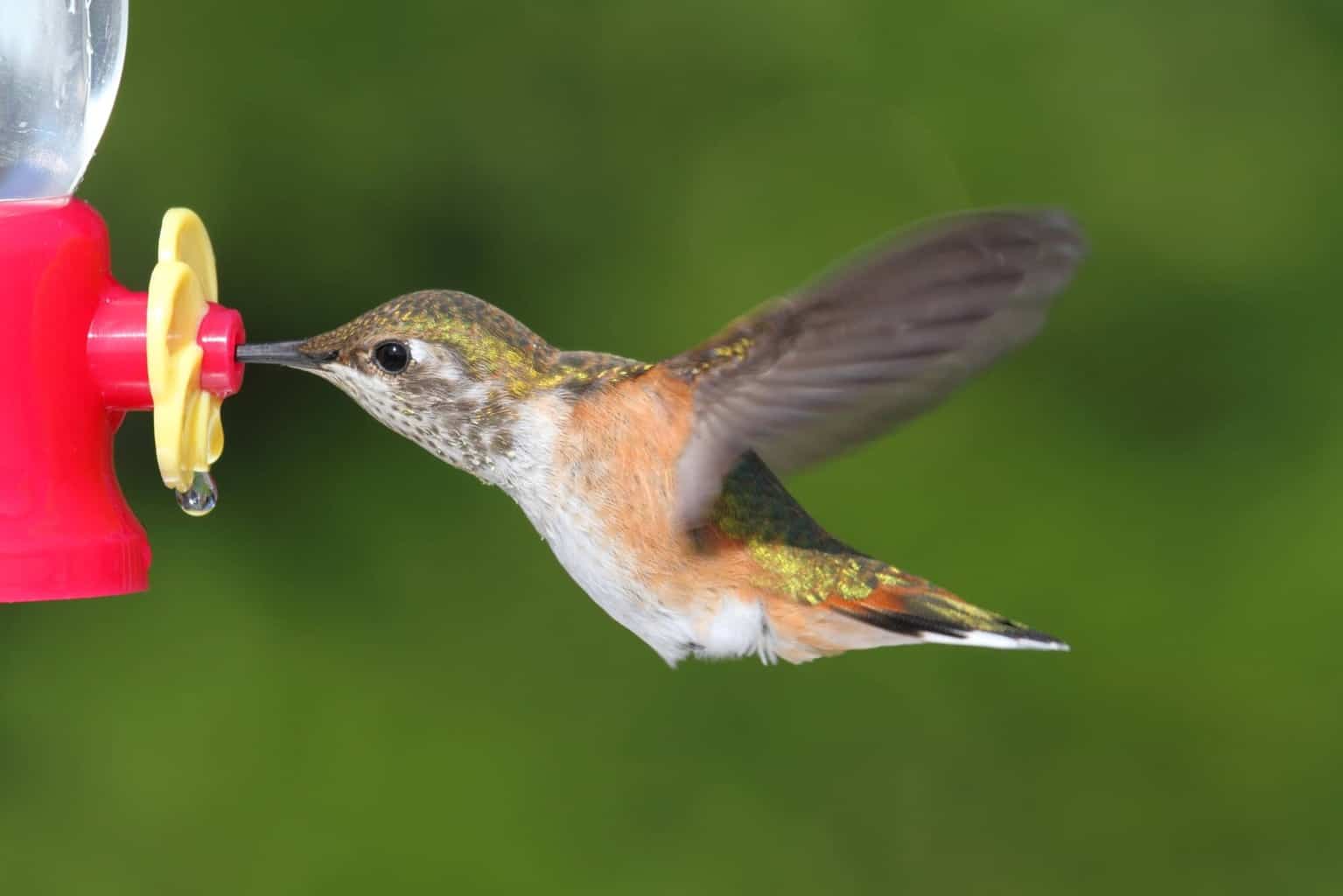
- Length: 3 to 3.5 inches
- Weight: 0.07 to 0.14 ounces
- Wingspan: 4.3 inches
Description:
Male Allen’s hummingbirds have green plumage with iridescent coppery-orange throats and rust-colored bellies, tails, and eye patches. The females look similar but lack a bright throat patch.
Additionally, both males and females have coppery-green backs. Moreover, juvenile Allen’s resemble the female Rufous hummingbird, making it quite challenging to tell them apart.
Additional Information:
Allen’s hummingbird is a small hummingbird species closely related to Rufous hummingbirds. Native to coastal California, Allen’s hummingbirds are accidental visitors in Ohio when they end up far out of their typical range.
Males Allen’s hummingbirds are typically aggressive, territorial birds that even chase other, larger birds.
Allen’s hummingbird gets its famous name from Charles A. Allen, a popular Californian bird collector.
In their natural environment, Allen’s hummingbirds feed on native plants and flowers rich in nectar. However, they occasionally enjoy zipping from feeder to feeder.
Black-Chinned Hummingbird (Archilochus Alexandri)
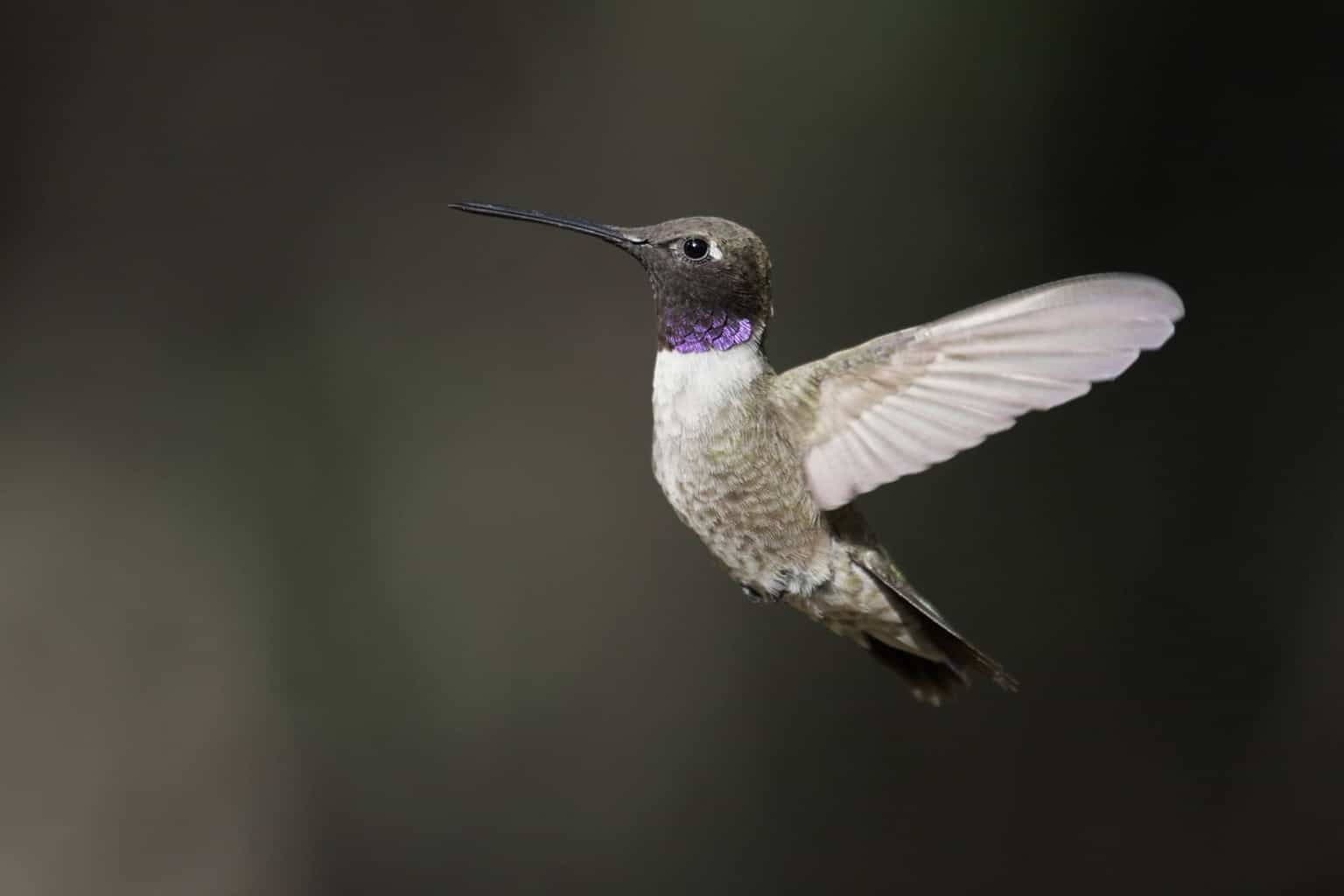
- Length: 3.25 inches
- Weight: 0.98 to 0.11 ounces
- Wingspan: 4 to 5 inches
Description:
Male Black-chinned hummingbirds have distinctive black chins, greenish-grey crowns, backs, and flanks, with a small white spot right behind their eye. Additionally, black-chinned hummingbirds have an iridescent purple band and a contrasting white collar around the bottom of their gorgets.
The female Black-chinned hummingbird has pretty similar markings; however, the females have faint green streaks on their white throats.
Additional Information:
Black-chinned hummingbirds roam between mountain foothills, canyons, gardens, and parks. Additionally, they produce calls or raspy chatters, especially when territorial toward other birds or giant insects.
In cold weather, Black-chinned hummingbirds can ingest up to three times their body weight in nectar in one day.
Black-chinned hummingbirds are herbivores that feed on native nectar-filled flowers and homemade sugar water at feeders.
Black-chinned hummingbirds lay eggs approximately the size of a coffee bean!
Calliope Hummingbird (Stellula calliope)
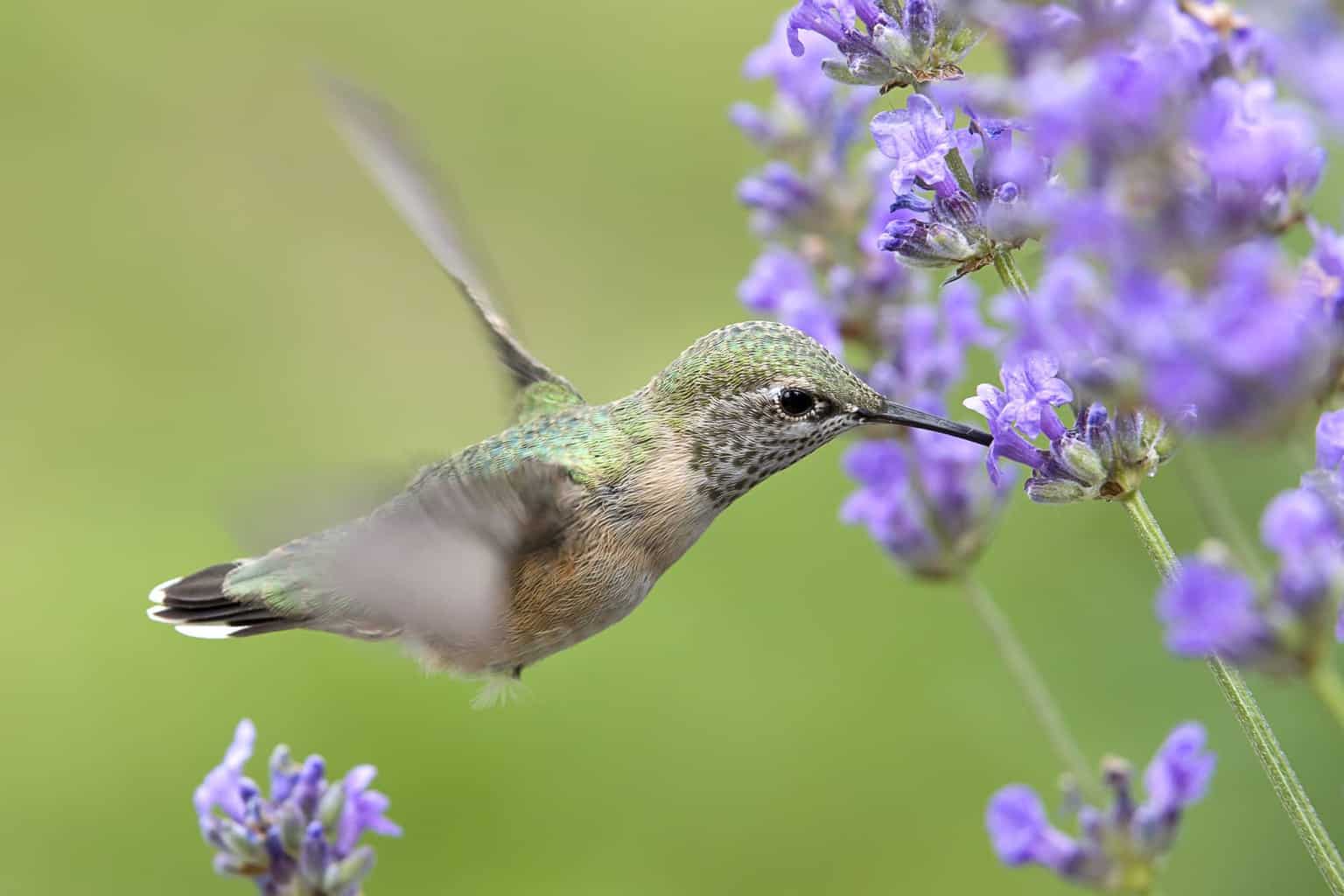
- Length: 2.8 to 3.9 inches
- Weight: 0.07 to 0.1 ounces
- Wingspan: 4.3 inches
Description:
Calliope hummingbirds have glossy emerald green upper plumage and creamy white undersides and throats. Adult males display elongated iridescent wine-red throat feathers on their white gorgets, resembling a “whiskered” effect when erected. He also shows green flanks and a dark tail.
In comparison, females display dark streaks on their dull whitish throats, a pinkish wash on their flanks, and dark tails with white tips. Additionally, their chests are typically a cinnamon-buff color.
Additional Information:
Calliope hummingbirds are the smallest breeding birds in the United States. They predominantly have a western breeding range, but they migrate to the southwestern United Stated for their wintering grounds.
Calliope hummingbirds are migratory hummingbirds that move to their breeding ground quite a bit earlier than most other hummingbird species; the males are well off to Mexico before the young hatch.
Did you know that Calliope hummingbirds are the smallest-bodied long-distance migrants worldwide, only weighing about the same weight as a ping pong ball?
The Calliope Hummingbird gets its famous name from Calliope, the muse of eloquence and poetry, inspiring Homer’s Iliad and Odyssey.
Conclusion
Although the Ruby-throated hummingbird is the only common species in Ohio, there are five more to keep an eye out for; hopefully, your bird feeders will grant you the opportunity to capture a few of the other rare, visiting species.
If you’re eager to find out more about birds in Ohio, here’s a fun article on 26 popular birds in Ohio.

